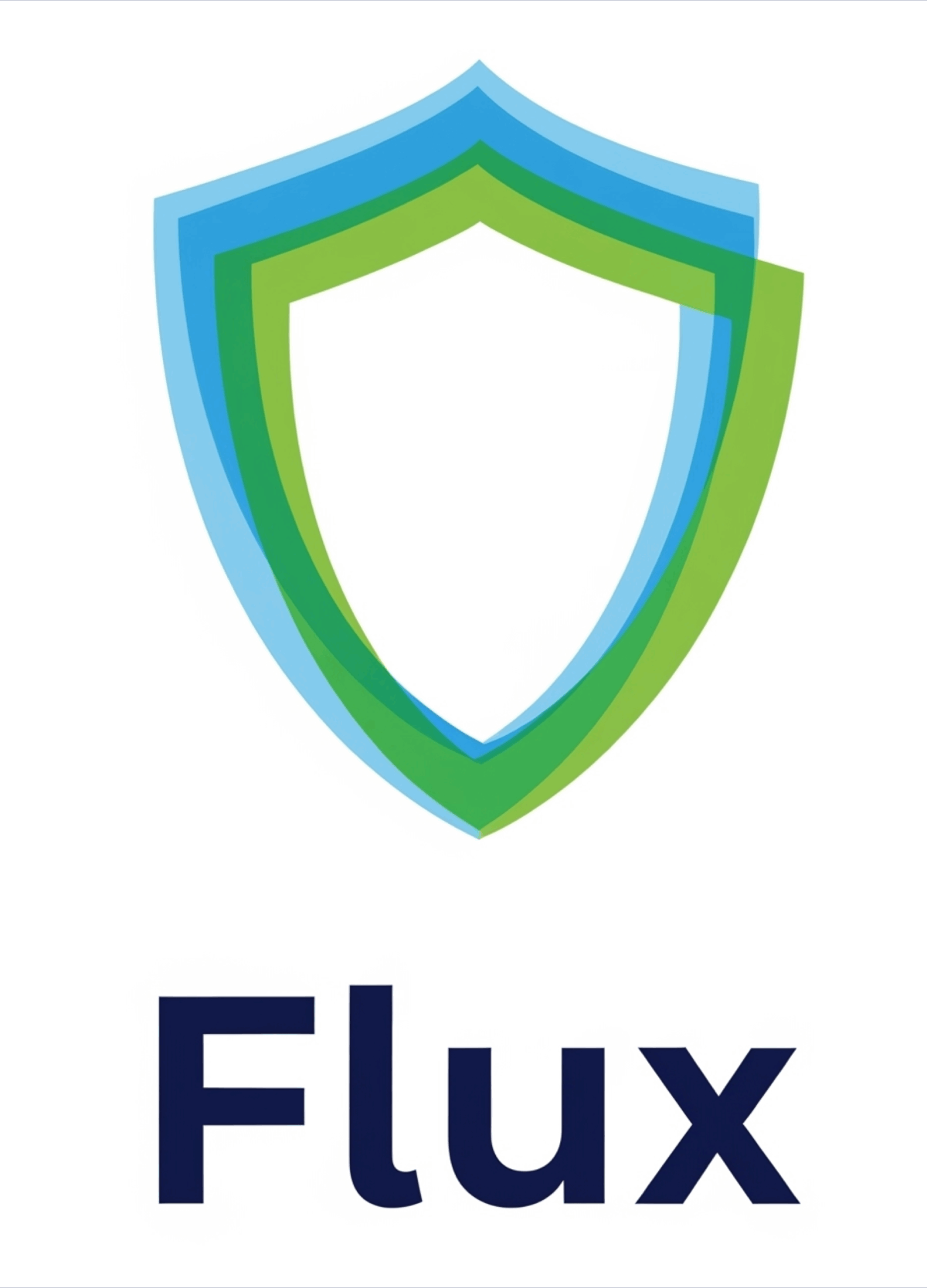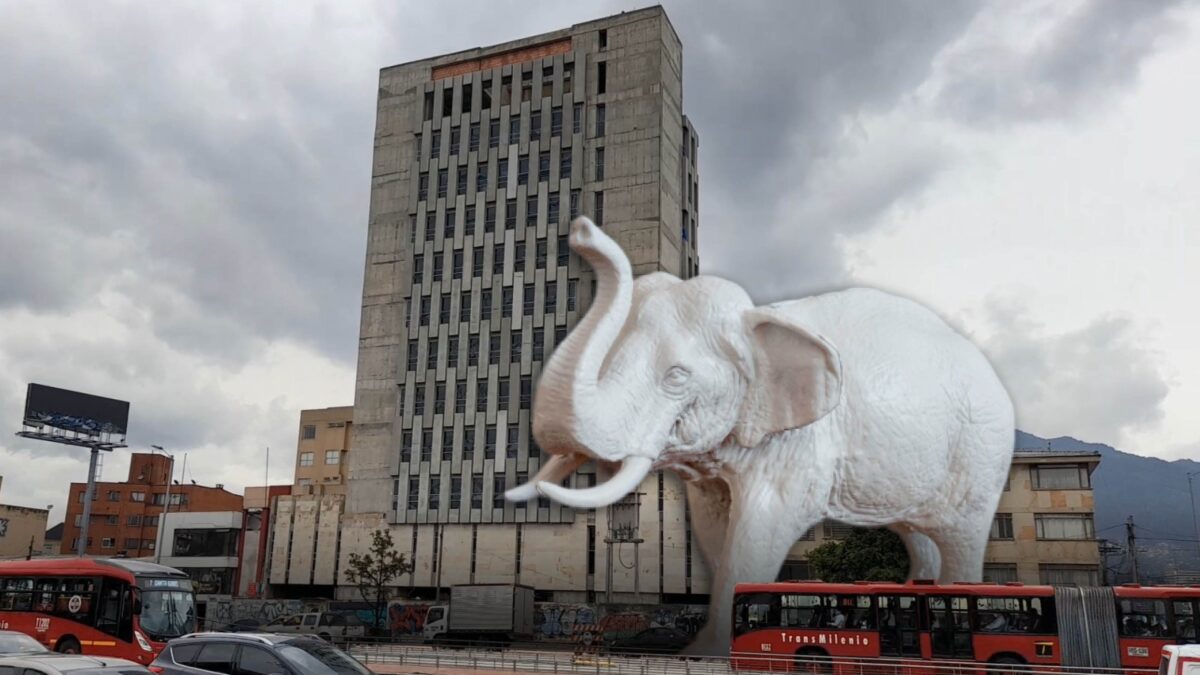Flux: Follow the money

Flux is a financial auditing and control platform designed to monitor resource transfers in infrastructure projects and ensure transparency in the management of public funds.
We show you how it works.
¿How the problem is perceived day-by-day?
In Bogotá, it’s not uncommon to hear people wonder where the money went. You see worksites covered in green mesh fencing that never seems to come down — the kind that makes streets feel less safe. Concessions are granted, then sit half-finished for months or even years.
The city becomes a patchwork of construction zones, visual chaos, and unanswered questions. It’s not just about corruption. It’s about not knowing who’s in charge, or if anyone’s really watching.

Contracting cartels. Delayed projects. And what in Colombia we call a “white elephant” — abandoned infrastructure left behind after funds are stolen, and no one is held accountable.
The Challenge
Design a Product-System (PS) and a brand that ensure the integrity, transparency, and auditability of public financial data. The system should empower both officials and citizens to trace the full financial lifecycle of infrastructure projects in Bogotá — from allocation to execution — creating a trustworthy, tamper-proof record that helps expose inefficiencies, prevent corruption, and rebuild public trust.
How to do it?
Through…
The Brand
Flux is more than a name — it’s a promise of transparency and accountability. The brand must stand as a civic ally: clear, confident, and unafraid to ask where did the money go?
It should resonate with everyday citizens who feel the consequences of mismanaged infrastructure in traffic, insecurity, and public decay. By visualizing clarity in the midst of urban and institutional disorder, Flux aims to become the trusted symbol of oversight in Bogotá’s public sphere.
The System-Product
The Flux system will enable the full financial lifecycle of public infrastructure projects to be tracked and verified — from budget allocation to final delivery.
Through a secure, tamper-proof platform, it will empower both officials and citizens to identify inefficiencies, detect irregularities, and follow the money in real time. By making complex financial data accessible and actionable, Flux will expose gaps in public accountability and rebuild trust from the ground up.
Objectives
Standardize Financial Data Architecture
- Identify and unify key data sources across public entities (e.g., IDU, Secretariats), define data formats (APIs, CSVs, etc.), and set update frequencies for consistent integration.
- Implement a Distributed Ledger for Integrity
Build a tamper-proof ledger (e.g., blockchain or DLT) that records key financial events — payment milestones, contract changes — with defined block structures, consensus rules, and validation nodes.
- Define Roles, Permissions, and Security Protocols
Establish granular access controls for each type of user (officials, auditors, citizens), including who can view, upload, or propose edits to the financial record.
- Design for Scalability and Interoperability
Ensure the system can scale to cover all infrastructure projects in Bogotá and be interoperable with other government platforms and open data systems.
Product Goals
Flux operates through a distributed network of secure nodes, where each node holds a synchronized copy of verified financial data related to infrastructure projects. Instead of relying on a single authority, information is proposed, validated, and recorded across multiple entities — ensuring transparency, redundancy, and resistance to tampering. This decentralized architecture guarantees that once data is approved, it cannot be altered without consensus, making the entire financial lifecycle of public projects traceable, auditable, and secure by design.
Tipos de contrato. 1. Constructor 2. Supervisor
Consultoría (Asesoría a entidad publica, factibilidad, monitorización de avance)
Quien construye: Consorcio
Entidad publica realiza pagos directamente secretaria de hacienda
IDU (Distrital) – ANI (Nacional) 50/50
Ejemplo. 10% IDU (Viene de Hacienda) 10% ANI (viene de Banco de la Republica) Distribución de pagos, según la naturaleza del proyecto.
Contrato de estudio de factibilidad y diseño (primer contrato 2020-2023 Transmicable ANI IDU San Cristobal) 1era etapa = Planeación (Documentos del proceso) Estudios previos y anexos tecnicos.
2da etapa (seleccion) Licitacion publicada a SECOP I y II ? Los proponentes presentan ofertas, se revisan, comentarios, compromisos, ajustes a documentos.
3era etapa recepción de ofertas. Se reciben ofertas de los proponentes, oferta economica, qué ofrecen.
4ta evaluación, mesa técnica de evaluadores que revisan las ofertas, asignan puntaje y adjudica un proveedor. Hay compromisos y responsabilidades para con el denominado contratista. Firma de seguros. Empieza la ejecución al haber firmado el contrato.
EJECUCIÓN: Depende del contrato, consultar tipos del sector publico. Por corrupcion se han disminuido el capital inicial para iniciar. Se revisa tasa de endeudamiento, capital de trabajo, activos sobre pasivos.
¿Quién convoca el concurso? (mesa de revisores), luego de convocar quién aprueba al ganador, luego quién deposita, quién supervisa, ejecución del proyecto, revisión final (evaluación).
Plataforma interna de pagos Confidencial por datos personales de partes
¿Qué tanto acceso hay a info de Hacienda, info de pagos? – Reunión con Hacienda ( Informes de seguimiento y de pagos SECOP II y SECOPI – Revisar publicación, encontrar data especifica “TransmiCable”)
Transparencia: proceso de contratacion, veeduria ciudadana y control de pagos
